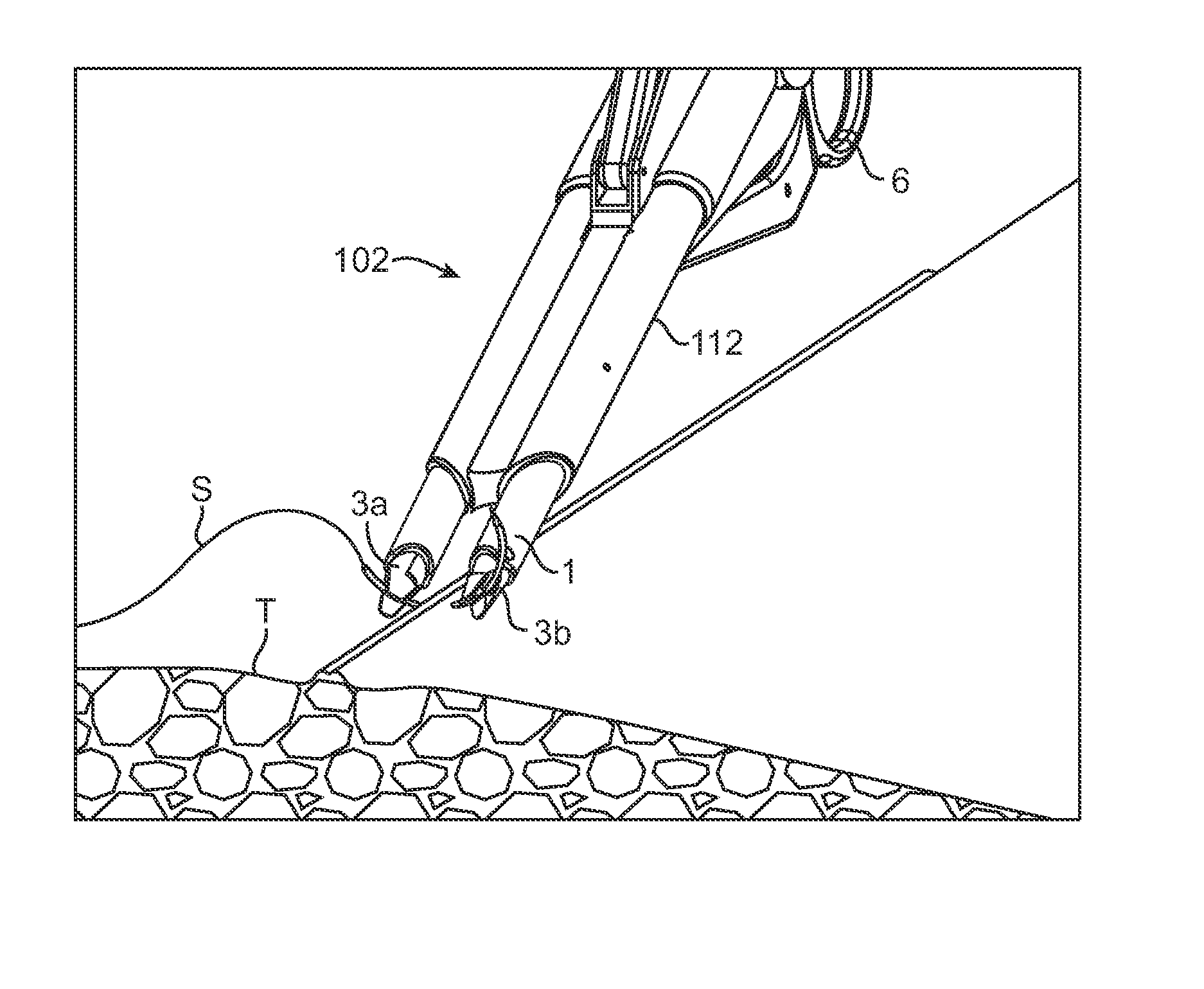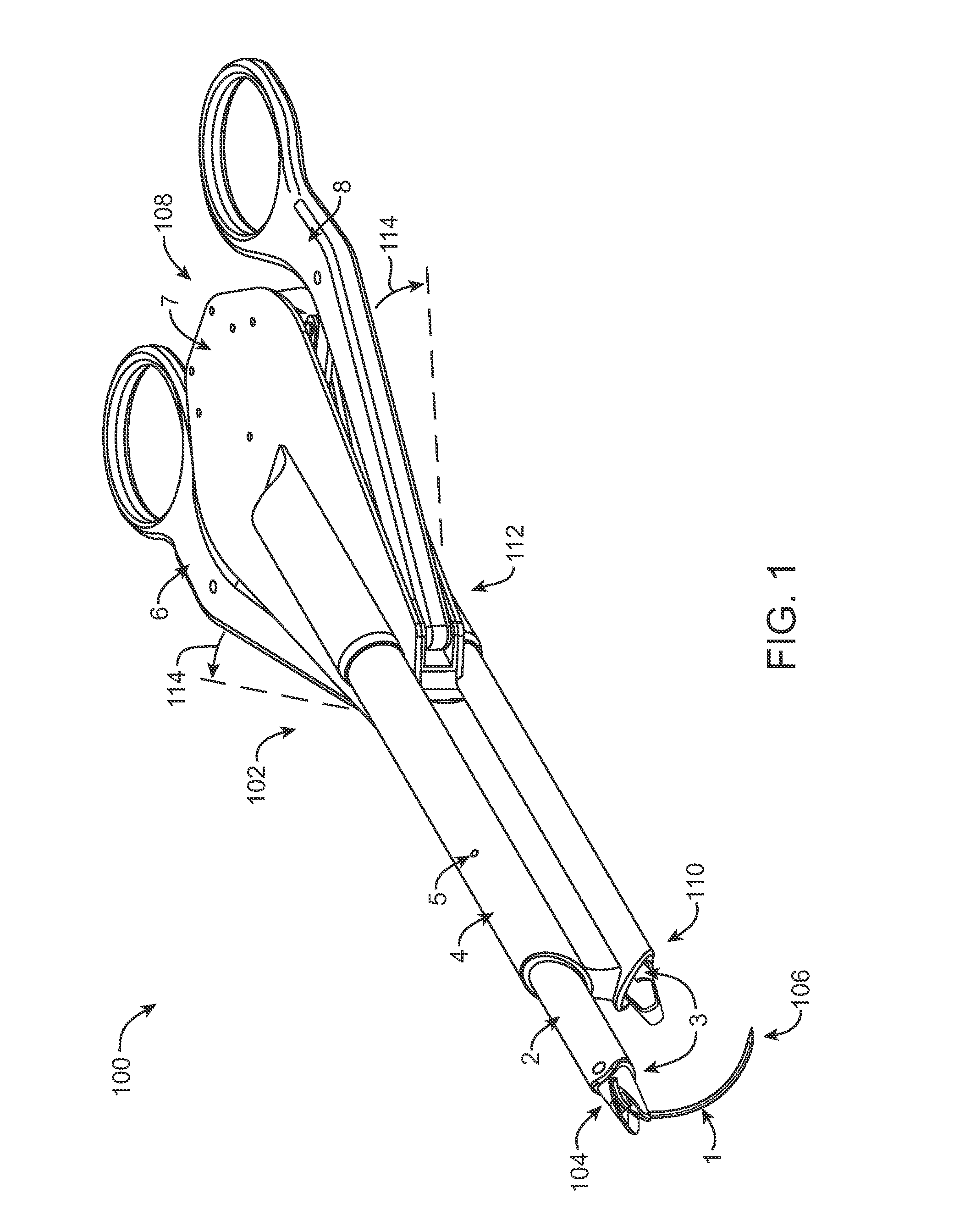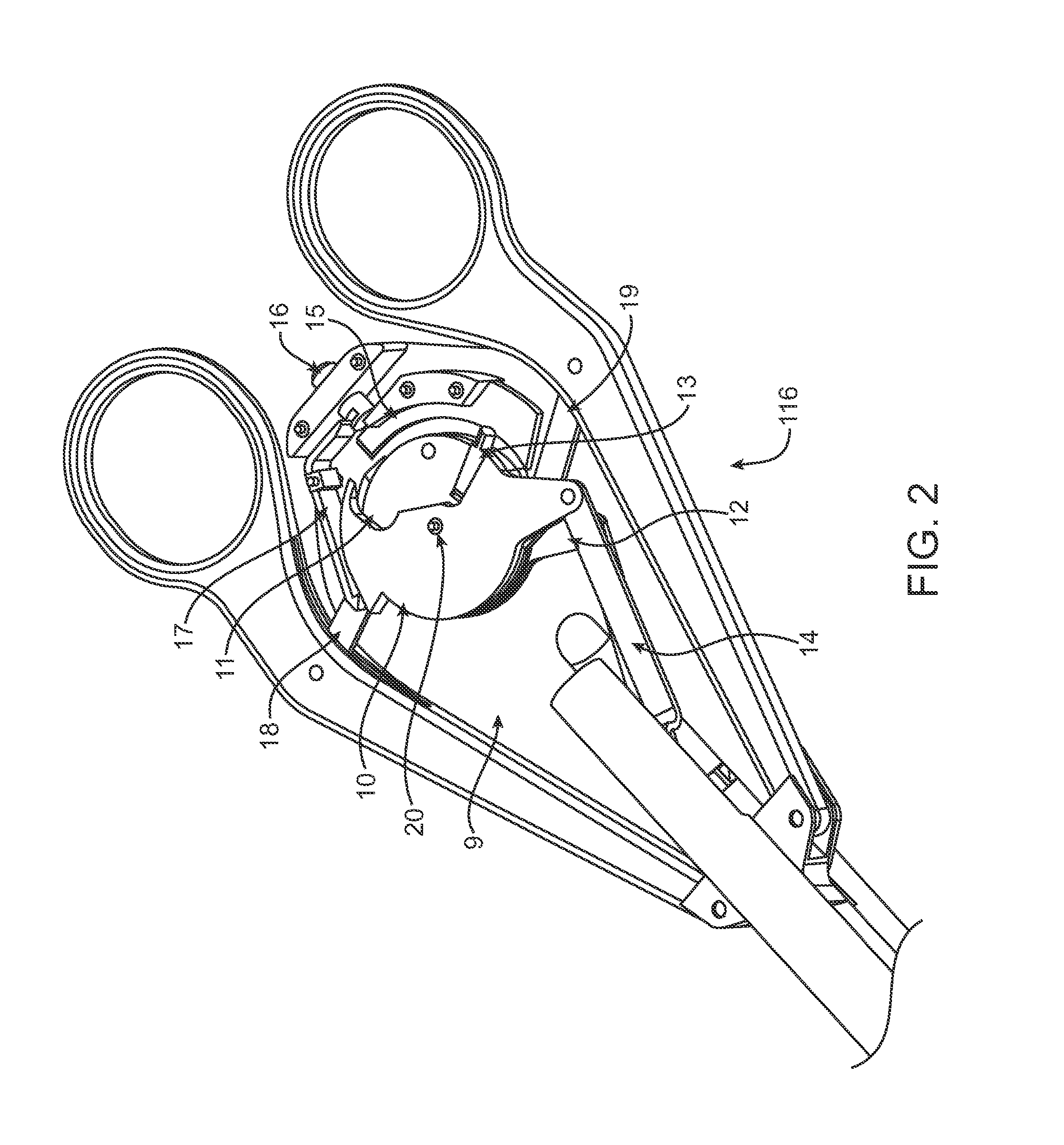Suturing Device, System, and Method
a suture needle and suture technology, applied in the field of suturing devices, systems and methods, can solve the problems of difficult manipulation of suture needles, large number of suture stitches, and difficulty in placing suture needles, so as to improve speed and ease of use, precise control of needle movement and positioning of sutures
- Summary
- Abstract
- Description
- Claims
- Application Information
AI Technical Summary
Benefits of technology
Problems solved by technology
Method used
Image
Examples
embodiment 140
[0080] Note that in embodiment 140, needle 1 generally extends along a plane of actuation of handle 62. In contrast, in suturing device 102, illustrated in FIG. 1, needle 1 generally extends across the handle actuation plane. Ergonomically, there may be advantages in orienting the needle so that it traverses the handle actuation plane as shown in FIG. 1. Such a configuration may conveniently be used by either a right hand or a left hand of the surgeon, although embodiments configured for use by only one or the other may also be provided.
[0081] Referring now to FIGS. 22 and 23, yet another alternative suturing device 160 has an external appearance somewhat similar to suturing device 140 of FIGS. 18 and 19, but makes use of a significantly different linkage mechanism for coupling handle 72 to clamps 69, 70. The clamps again extend from associated channels in body 71, but the linkage here makes use of a rack 77 actuated by a rod 84.
[0082] First clamp 69 has elongate levers 73 and 74, ...
embodiment 220
[0084] A still further exemplary suturing device embodiment 220 can be seen in side and cross-sectional top views in FIGS. 25A and 25B. An elongate extension 222 coupling proximal housing 224 to clamps 226 may facilitate use of suturing device 220 in endoscopic surgery or the like. In this embodiment, actuation of drive linkage 228 is generally effected by movement of a single articulatable handle 230 relative to a grasping base 232 that is affixed to proximal housing 224. By allowing the surgeon to grasp a structure that remains rigidly affixed relative to the suturing device body with one portion of the hand, and articulate handle 230 with the fingers of that hand, the overall position of suturing device 220 (and clamps 226, along with any needle supported therein) can be accurately maintained. As with the other embodiments described herein, a release 233 will often be provided that, when actuated, releases a needle from both clamps and sets the two clamps in a needle-receiving co...
PUM
 Login to View More
Login to View More Abstract
Description
Claims
Application Information
 Login to View More
Login to View More - R&D
- Intellectual Property
- Life Sciences
- Materials
- Tech Scout
- Unparalleled Data Quality
- Higher Quality Content
- 60% Fewer Hallucinations
Browse by: Latest US Patents, China's latest patents, Technical Efficacy Thesaurus, Application Domain, Technology Topic, Popular Technical Reports.
© 2025 PatSnap. All rights reserved.Legal|Privacy policy|Modern Slavery Act Transparency Statement|Sitemap|About US| Contact US: help@patsnap.com



